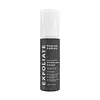What's inside
What's inside
 Key Ingredients
Key Ingredients

 Benefits
Benefits

 Concerns
Concerns

 Ingredients Side-by-side
Ingredients Side-by-side

Salicylic Acid 2%
MaskingWater
Skin ConditioningAlcohol Denat.
AntimicrobialPropylene Glycol
HumectantGluconolactone
Skin ConditioningPolyglyceryl-10 Laurate
Skin ConditioningLactic Acid
BufferingPyruvic Acid
MaskingPhytic Acid
Azelaic Acid
BufferingSalix Alba Bark Extract
AstringentCarnitine Hcl
HumectantXylitol
HumectantCaprylic Acid
CleansingLeuconostoc/Radish Root Ferment Filtrate
AntimicrobialFarnesol
PerfumingTetrahydrocurcumin
AntioxidantChlorhexidine Digluconate
AntimicrobialSoy Isoflavones
Skin ConditioningSaccharide Isomerate
HumectantZinc PCA
HumectantSodium Hyaluronate
HumectantMethyl Glucose Sesquistearate
EmollientNeopentyl Glycol Diethylhexanoate
EmollientPEG-20 Methyl Glucose Sesquistearate
EmulsifyingGlyceryl Stearate
EmollientHexylresorcinol
AntimicrobialDimethyl Isosorbide
SolventPropanediol
SolventC13-15 Alkane
SolventPotassium Hydroxide
BufferingStearic Acid
CleansingCitric Acid
BufferingCalcium Gluconate
HumectantSodium Citrate
BufferingCucumis Sativus Fruit Water
Skin ConditioningPhenoxyethanol
PreservativeSodium Benzoate
MaskingPotassium Sorbate
PreservativeSalicylic Acid 2%, Water, Alcohol Denat., Propylene Glycol, Gluconolactone, Polyglyceryl-10 Laurate, Lactic Acid, Pyruvic Acid, Phytic Acid, Azelaic Acid, Salix Alba Bark Extract, Carnitine Hcl, Xylitol, Caprylic Acid, Leuconostoc/Radish Root Ferment Filtrate, Farnesol, Tetrahydrocurcumin, Chlorhexidine Digluconate, Soy Isoflavones, Saccharide Isomerate, Zinc PCA, Sodium Hyaluronate, Methyl Glucose Sesquistearate, Neopentyl Glycol Diethylhexanoate, PEG-20 Methyl Glucose Sesquistearate, Glyceryl Stearate, Hexylresorcinol, Dimethyl Isosorbide, Propanediol, C13-15 Alkane, Potassium Hydroxide, Stearic Acid, Citric Acid, Calcium Gluconate, Sodium Citrate, Cucumis Sativus Fruit Water, Phenoxyethanol, Sodium Benzoate, Potassium Sorbate
Water
Skin ConditioningButylene Glycol
HumectantPolysorbate 20
EmulsifyingCetyl Alcohol
EmollientSalicylic Acid
MaskingAmmonium Acryloyldimethyltaurate/Vp Copolymer
Cyclopentasiloxane
EmollientSorbitan Stearate
EmulsifyingCamellia Sinensis Leaf Extract
AntimicrobialLauric Acid
CleansingAllantoin
Skin ConditioningGlycerin
HumectantGlycyrrhiza Glabra Root Extract
BleachingAvena Sativa Kernel Extract
AbrasiveEpilobium Angustifolium Extract
Skin ConditioningDimethicone
EmollientXanthan Gum
EmulsifyingMagnesium Aluminum Silicate
AbsorbentPEG-40 Hydrogenated Castor Oil
EmulsifyingSodium Hydroxide
BufferingHexylene Glycol
EmulsifyingDisodium EDTA
Ethylhexylglycerin
Skin ConditioningPhenoxyethanol
PreservativeCaprylyl Glycol
EmollientWater, Butylene Glycol, Polysorbate 20, Cetyl Alcohol, Salicylic Acid, Ammonium Acryloyldimethyltaurate/Vp Copolymer, Cyclopentasiloxane, Sorbitan Stearate, Camellia Sinensis Leaf Extract, Lauric Acid, Allantoin, Glycerin, Glycyrrhiza Glabra Root Extract, Avena Sativa Kernel Extract, Epilobium Angustifolium Extract, Dimethicone, Xanthan Gum, Magnesium Aluminum Silicate, PEG-40 Hydrogenated Castor Oil, Sodium Hydroxide, Hexylene Glycol, Disodium EDTA, Ethylhexylglycerin, Phenoxyethanol, Caprylyl Glycol
 Reviews
Reviews

Ingredients Explained
These ingredients are found in both products.
Ingredients higher up in an ingredient list are typically present in a larger amount.
Phenoxyethanol is a preservative that has germicide, antimicrobial, and aromatic properties. Studies show that phenoxyethanol can prevent microbial growth. By itself, it has a scent that is similar to that of a rose.
It's often used in formulations along with Caprylyl Glycol to preserve the shelf life of products.
Salicylic Acid (also known as beta hydroxy acid or BHA) is a well-known ingredient for treating skin that struggles with acne and clogged pores. It exfoliates both the skin's surface and deep within the pores to help clear out buildup, control oil, and reduce inflammation.
Unlike AHAs (alpha hydroxy acids), salicylic acid is oil-soluble. This allows it to penetrate into pores which makes it especially effective for treating blackheads and preventing future breakouts.
Salicylic acid is also known for its soothing properties. It has a similar structure to aspirin and can calm inflamed or irritated skin, making it a good option for acne-prone skin that is also sensitive.
Concentrations of 0.5-2% are recognized by the U.S. FDA as an over-the-counter topical acne product.
It can cause irritation and/or dryness if one's skin already has a compromised moisture barrier, so it's best to focus on repairing that before introducing this ingredient into your routine.
While salicylic acid does not increase sun sensitivity, it’s still important to wear sunscreen daily to protect your skin.
If you are looking for the ingredient called BHA or Butylated Hydroxyanisole, click here.
Learn more about Salicylic AcidWater. It's the most common cosmetic ingredient of all. You'll usually see it at the top of ingredient lists, meaning that it makes up the largest part of the product.
So why is it so popular? Water most often acts as a solvent - this means that it helps dissolve other ingredients into the formulation.
You'll also recognize water as that liquid we all need to stay alive. If you see this, drink a glass of water. Stay hydrated!
Learn more about Water